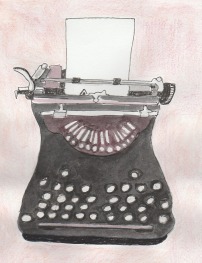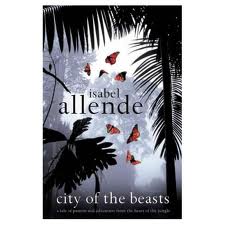How to write a best-seller
It’s a bit like coming across the Holy Grail of writing – a news story claiming scientists have found the secret to writing a best-seller.
The scientists, from New York’s Stony Brook University, claim to have done so by using what they call “statistical stylometry”. This involved using an algorithm to examine the use of words in 800 books. They found that the most popular books exhibited several characteristics: they used a lot of nouns and adjectives but fewer verbs and adverbs than less successful books, as well as lots of conjunctions like “and” and “but”.
And when they did use verbs they tended to be more complex ones like “recognised” and “remembered” that described thought processes rather than simpler ones like “wanted” and “took”.
This made me wonder if the “simple” premise of Murder Your Darlings was wrong, so I decided to check out that master of spare prose Ernest Hemingway. I found he often wasn’t quite as spare as I’d thought he was. First of all though, here is a wonderful and relevant quote from the master of robust prose about writing:
“There is nothing to writing. All you do is sit down at a typewriter and bleed.”
It’s a true metaphor. Which touches on another point Hemingway made about writing: you must write the truth. But that’s such a big subject it’s worthy of a separate blog post, so back to nouns, conjunctions and adjectives.
The goodreads website lists many sterling Hemingway quotes. Many of them contain powerful nouns, but he isn’t quite so strong on the use of conjunctions – his journalistic background likely trained him to use them carefully. However, he uses them to great effect when he does so, as in:
“We ate well and cheaply and drank well and cheaply and slept well and warm together and loved each other.”
– from A Moveable Feast, which describes his youthful time in Paris.
He also uses his adjectives effectively, as in his double use of the simple adjective, ‘cold’ in:
“You expected to be sad in the fall. Part of you died each year when the leaves fell from the trees and their branches were bare against the wind and the cold, wintery light. But you knew there would always be the spring, as you knew the river would flow again after it was frozen. When the cold rains kept on and killed the spring, it was as though a young person died for no reason.”
(Also from A Moveable Feast).
Good children’s books also more ‘thoughtful’
But let’s not let Hemingway hog the stylistic limelight. I love children’s books, so I decided to test out the scientists’ theory on a fairly well known book for older children, Isabel Allende’s City of the Beasts. The book is a dramatic modern fable set in the Amazon rainforest. It features a fierce, pipe-smoking grandmother, a boy, Alex, who has a dying mother, a Beast and a hidden tribe threatened by modern carpetbaggers.
The language and ideas are simpler than those in Hemingway’s books because it is a children’s book, but City of the Beasts still manages to fulfil the ‘good book’ criteria.
For example, here is Allende’s description of Alex’s roving, independent writer grandmother:
“His grandmother travelled with three changes of cotton clothing, vodka, tobacco, shampoo, soap, insect repellent, a mosquito net, a blanket, paper and a box of pencils – all in a single canvas bag.”
The many nouns paint a full picture of this most unusual grandmother in simple but effective words.
As Hemingway said – I didn’t mean to let him have another word but somehow he snuck in – “Show the readers everything, tell them nothing.”
A feature of writing excellence our algorithmic scientists didn’t pick up on.
So, last, but not least, here is Alex meeting the jaguar who becomes his totemic animal:
“Cat and human were so close that Alex could distinguish each golden fleck in the pupils of the beast as their eyes locked in silent dialogue.”
A rather simple image for adults, of course, but an exciting one for young, adventure-loving readers just discovering the world.
So, to write better, go light on the simple verbs – take the more “thoughtful” approach in describing actions. Eschew adverbs most of the time too. Instead, use powerful nouns and carefully chosen adjectives to tell your story.
Tips for writing a best-seller
- Use lots of nouns and adjectives but fewer verbs and adverbs.
- Use conjunctions like “and” and “but”.
- Use complex that describe thought processes rather than simple ones. For example, verbs like “recognised” and “remembered” rather than the simpler “wanted” and “took”.

